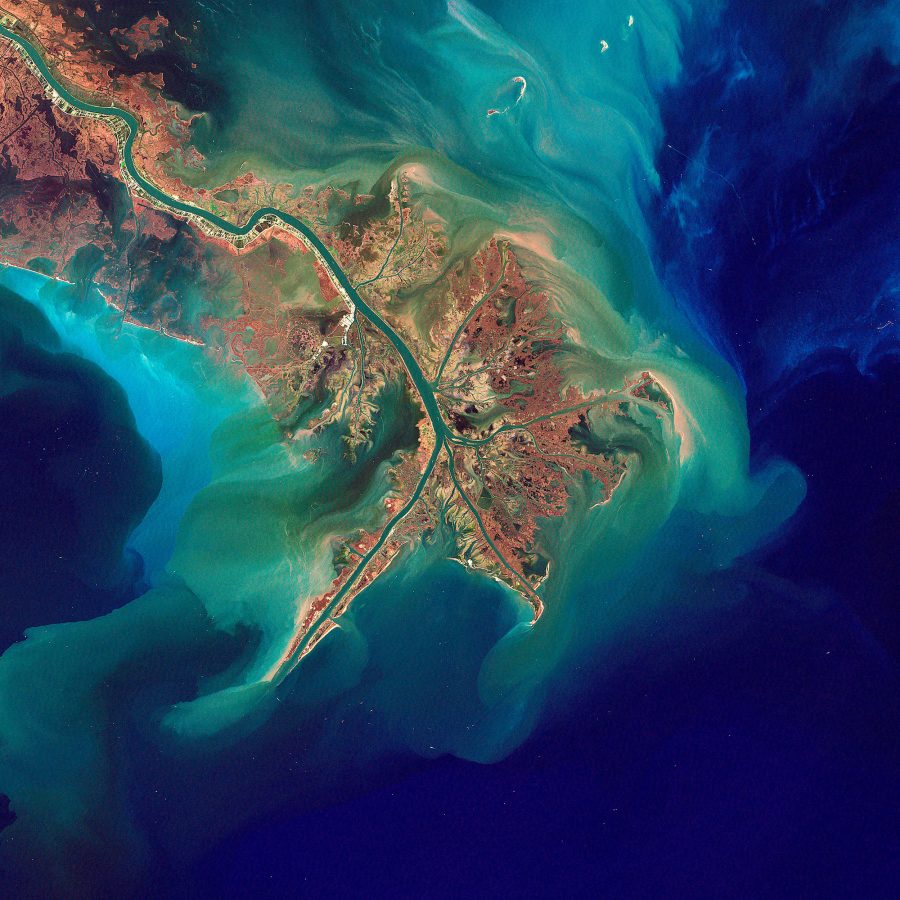From Hakai Magazine:
Our long history of constraining the river through levees has led to massive land loss in its delta. Can we engineer our way out? And at what cost?
The creation story told by the Chitimacha people, in Louisiana, describes the world in its earliest days as a wide expanse of water. Then the Great Creator instructed crawfish to dive down and bring up a bit of mud. Geologists tell a similar tale, though their sculptor is the Mississippi River: for thousands of years, it dumped soils stolen off the continent into the Gulf of Mexico. Thus the river formed its delta, a vast and muddy and ever-changing landscape, where the water once forked into many paths to the sea.
These days, though, the river is largely restricted to one channel. Imprisoned within artificial levees, it’s no longer able to deposit its mud according to hydrological whim; instead, the river spits its sediment into the abyss of the deep sea. The consequences are grim: The existing mudscape is sinking. The ocean is rising. Over the past nine decades, more than 5,000 square kilometers of delta land in Louisiana has disappeared.
Few places are going faster than Plaquemines Parish, which encompasses the muddy land along the river’s final 100 or so kilometers, where New Orleans’ exurbs give way to a smattering of rural communities. (A parish is the local equivalent of a county, a remnant of Louisiana’s French colonial history.) One morning last summer, as we weave in his skiff through the parish’s marshland, Richie Blink tells me that the federal government has recently deleted 30-odd names from local nautical maps. Fleur Pond, Dry Cypress Bayou, Tom Loor Pass, Skipjack Bay: all have become undifferentiated, unlabeled expanses of open ocean.
Streaks of brown sediment flow from outlets along one branch of the Mississippi River’s delta. Authorities hope that breaking another hole in the levee nearby will help the river rebuild lost land. Photo by Tsado/Alamy Stock Photo
Now, the state government wants to open a gap in the levee to divert some of the river’s muddy water back into the marshes, allowing the river to resume its old task of construction. Work on the gap could begin in early 2023, assuming, that is, that the US Army Corps of Engineers, the federal agency that oversees waterway infrastructure, grants its official approval later this year. The Mid-Barataria Sediment Diversion—which is named for Barataria Bay, where the released river water will build a new “sub-delta”—has been under discussion for years, but now, on the eve of destruction, it’s come under a firestorm of criticism from shrimpers worried about their livelihood; from homeowners concerned about flooding; and from environmentalists dismayed at the potential loss of bottlenose dolphins, a federally protected species. The diversion is intended to build new marshland, but it’s sometimes depicted as the latest assault on the region’s rural communities—which, according to critics, are about to be sacrificed again for the sake of nearby urban New Orleans.
Blink, an ecotour guide, serves on the Plaquemines Parish council and is the sole member who has not voted to oppose the project. “We are facing these massive changes,” he tells me as the solid ground disappears behind us and we speed into open water. Either the diversion will alter the ecosystem, or the loss of land will. One way or another, the parish will have to do something new if it wants to survive. “We have to imagine this delta of the future,” he says....
...MUCH MORE
